PSVR Review
Is PlayStation VR the best VR headset?
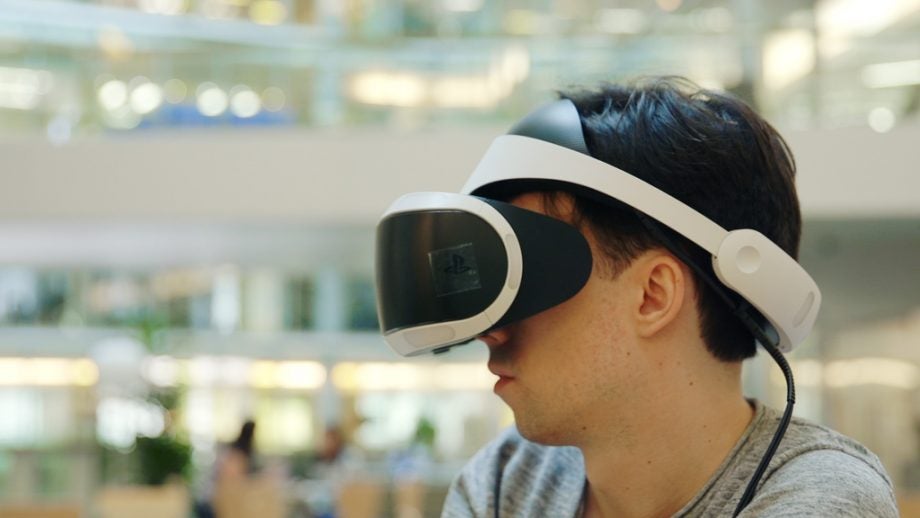

Verdict
PlayStation VR is simply one of the best virtual reality headset you can buy right now. It’s cheap while not compromising on performance and quality. The headset is simply stunning and incredibly comfortable to wear, and the games already available are some of the best VR experiences I’ve ever played.
Pros
- Amazing games already available
- Simple setup
- Movies look great in the headset
- Comfortable to wear even with glasses
- Better value than Oculus and Vive
Cons
- Processor unit needs to be unplugged to power down
- PS4 console desperately needs another USB port to charge all the controllers
- PlayStation Camera still fiddly
Key Specifications
- Review Price: £349.00
- 5.7-inch OLED Screen
- Resolution: 1,920 x RGB x 1,080 (960 x RGB x 1,080 per eye)
- Refresh Rate: 120Hz, 90Hz
- 100-degree field of view
- Integrated microphone, accelerometer, gyroscopes
The PlayStation VR 2 is now avaiable, and we strongly recommend checking it out instead of the original headset reviewed here. The original PSVR will no longer be supported by Sony with first-party titles, so all future major games releases will only launch on the PSVR 2. Check out our PlayStation VR 2 review for more details.
What is PlayStation VR?
Sony has joined the world of virtual reality with PlayStation VR. The headset represents the cheapest of the “big three” on the market and is the only option for console gamers interested in the technology as things stand.
Priced at £349.99, it’s significantly cheaper than both the Oculus Rift (£549 without Oculus Touch) and HTC Vive (£759).
However, players will also need to invest in a PlayStation Camera priced at £44.99, and, to enjoy the “full” experience, a couple of PlayStation Move controllers, with a twin pack costing £69 (although you could probably find them for less). This brings the total cost to £464, which is still cheaper than the Rift headset, with Oculus also charging £189 for its own controllers.
PlayStation VR – Installation and setup
In the box is the PlayStation VR headset, a processor unit, an HDMI cable, instruction manuals, a set of in-ear headphones, a lens-cleaning cloth, a demo disc and all the power cables you need. So many cables.
For the longest time I believed it was witchcraft that made the PlayStation VR work. Having taken a boxed one home and set it up, I’ve discovered the truth: it’s all about cables. Lots and lots and lots of cables. And then some more cables.
The setup process, to be fair, sounds trickier than it actually is. The whole process took around 30 minutes, feeding a series of HDMI cables from the PS4 to the PSVR processing unit, then to the headset itself.
The processing unit was a mystery for a long time before Sony revealed what it actually does – and it’s all pretty important stuff.
While the processing unit adds no power to the console itself, nor can developers actually program anything into it, it handles a few key functions. Firstly it helps carry out object-based 3D audio processing, which basically means you can pinpoint exactly where noises come from in games – so far, in my experience, it’s made sound design in games brilliant and terrifying. It also displays the “social” screen, basically rendering the image you see in VR onto the TV, though at a lower resolution and framerate. It also displays the standard PS4 screen in “cinematic” mode, allowing you to play non-VR games or watch movies on a display the size of a movie theatre screen.
Related: Best PlayStation VR Games
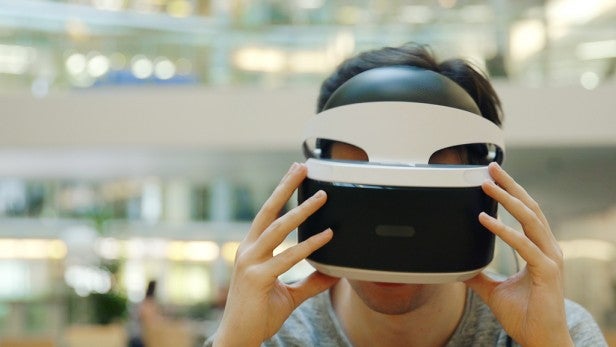
The one annoying thing about this processing unit is that it requires a dedicated power supply, which is fine in itself, but when you turn the PS4 completely off, the unit remains in a semi-powered state, with a red “off” bar permanently lit. This means the thing is constantly using electricity, so even when the whole setup is powered down you’ll have to unplug it if you wish to save the pennies or simply get rid of the annoying light before bed.
But, once everything is plugged in, the headset simply works. No drivers to update, no system requirements to fiddle with, no graphics options to tweak; you’re simply ready to go. Yes, there’s a software update, but let’s not split hairs.
Related: Vive Pro hands-on
PlayStation VR – Design and comfort
The Oculus Rift and HTC Vive headsets aren’t the snazziest bits of kit. The first consumer models look like glorified prototypes. The PlayStation VR, on the other hand, looks like an expensive bit of tech that you’d be happy to have on your shelf.
Everything about it looks gorgeous: the sleek white edging, the black fascia and the cool lights to allow for motion tracking.
The headset is pretty sizeable, with a cable coming out of the back, trailing down to a small adaptor with controls to turn the volume up and down on your headphones (which plug into the adaptor), as well as a power button to turn the headset on or off. Putting the headset on, I immediately noticed how comfortable it is.
Unlike other VR headsets, PSVR doesn’t fasten to your face with Velcro. Instead, you press a button at the back of the headset to extend the plastic band, place it over your head and then it automatically adjusts to fit, kind of like a vice – a cuddly vice.
Related: PS4 Pro vs PS4
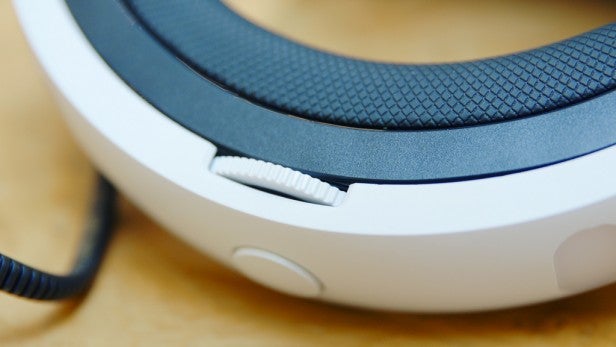
If the headset still feels a little loose, there’s a plastic dial you can turn to tighten it a bit more. The reason why the headset is so comfortable is that it never feels like it’s “gripping” around your head. The weight of the headset rests equally on your forehead and the back of your head, and there are small rubber flaps to sit on your nose to help block out external light. Unlike with Oculus and Vive, wearing glasses in PSVR isn’t a problem either.
Another thing that’s very easy for the PlayStation VR to pull off, and something I only noticed while playing Batman: Arkham VR, is allowing the player to turn 180 degrees while still tracking movement.
Thanks to two tracking lights on the back of the headset, I was able to turn and face the opposite direction and the game still worked perfectly. The Vive does this well with multiple sensor installations while the Rift seems to struggle when the sensor is behind you. I was very impressed once I discovered this little trick up the PSVR’s sleeve.
Also, another great feature is the ability to move the box on the front of the headset, which houses the display, forwards and backward. Primarily this is done to find the “sweet spot” of the image, where it’s no longer blurry, but also it enables you to perform simple real-world tasks like send a text or find the controller after you’ve put on the headset.
However, there is one downside to this design, and that’s permanently being able to see beneath the headset. Even when you push the display as close to your face as it can go, there’s still a gap, which can break the immersion. While focused on a game you won’t notice it, especially in a low-lit room, but it’s still there, and that’s a bit of a shame. But considering how comfortable the headset is to wear for prolonged sessions, I don’t think it’s a huge deal.
Related: PlayStation VR vs HTC Vive
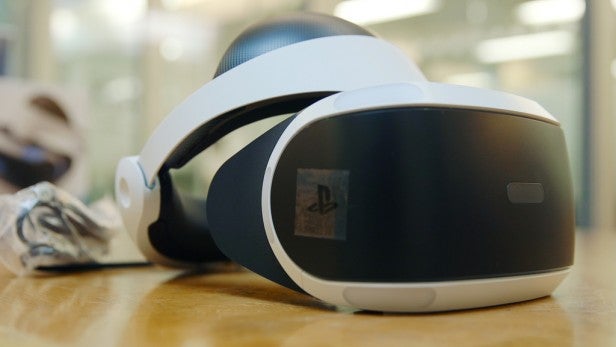
Another issue with the headset is that, due to its bulky nature, larger headphones can be troublesome. Standard over-ear headphones probably won’t fit – my Bose ones weren’t up to the job – but gaming headsets may be more adaptable. I was surprised at the quality of the bundled earphones, though, which proved to be more than serviceable during my review.
PSVR is also not massively demanding on space. The room in which I’ve used the headset isn’t massive, and was able to play games with relative comfort even with the Move Controllers. It helps that very few games require you to stand, and none require you to move around the room. The only time I ran into trouble was in Arkham VR, which demanded a decent chunk of space between the camera and myself, and also had some moments where I had to turn, which completely disoriented me, leading me to punch my bedroom wall.
What will be annoying is having to put away PlayStation VR’s chunky mass of cables while still having a presentable entertainment centre. Without packing and unpacking the entire VR headset each and every time you want to play, prepare to have some unsightly cables dangling about the place.
Related: PlayStation VR vs Oculus Rift
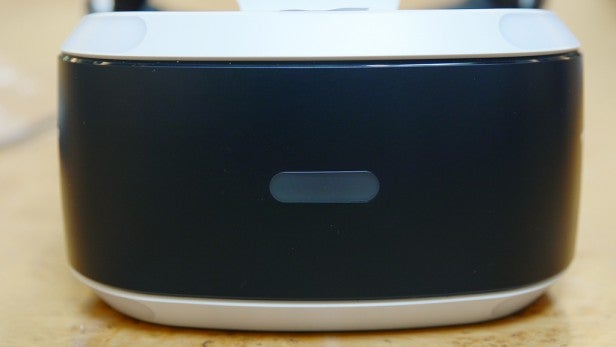
PlayStation VR – The PlayStation Camera
Sony has launched a new PlayStation Camera to coincide with the PlayStation VR launch. The new camera comes with its own stand, which can be raised and the lenses tilted upwards or downwards to accommodate your setup. The cable also now sits at the back of the camera – on the version launched with the PS4 it was at the side, which caused it to drag and alter position if the wire dropped off your TV cabinet.
However, despite being an improvement over the launch camera, it’s still incredibly fiddly. The cable is simply too thick and heavy compared to the weight of the camera and stand, meaning whenever I set it up, the cable would pull it out of whack. I ended up having to wedge the cable in order to fix the camera in place.
Related: Best VR Games
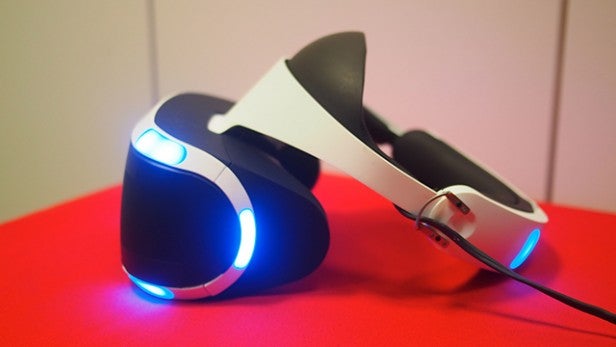
PlayStation VR – Display
Sony’s PlayStation VR display is the lowest in quality on the three big-name VR headsets. PSVR uses a single 1080p, 5.7-inch OLED screen, while both Oculus and Vive deliver a 2,160 x 1,200 resolution to each eye. The thing is, unless you had the spec sheet in front of you, or all the VR headsets side by side, I doubt you’d notice a huge difference.
There are certainly times when the lower screen quality is noticeable – screen jaggies in certain situations will be so big you’ll think you can climb them, and in low lighting the “screen door” effect is very obvious. But in brighter setups the latter isn’t anywhere near as apparent as on the Rift.
Rather than displaying a drastic drop in quality, the games actually look excellent. There’s great detail and colours are sumptuous, too. Where PSVR falters compared to its rivals is with details at a distance, where things can become a bit blurry. While playing Battlezone, a cluster of tanks in the distance simply becomes a wash of colour, while characters’ faces in VR Worlds’ The London Heist lack detail, and this is where the screen quality begins to have an impact.
Related: Nintendo Switch review
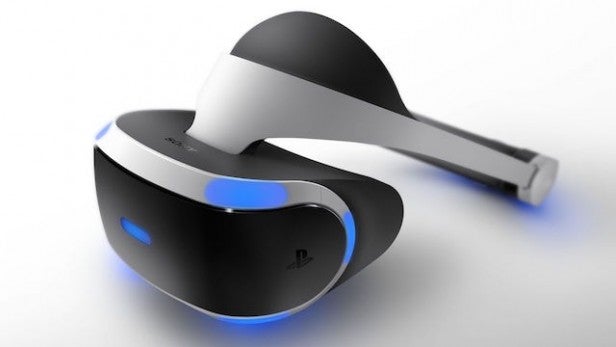
What PSVR offers that neither Rift nor Vive can is the ability to render games at 120Hz as well as 90Hz. This makes for a much smoother and more comfortable virtual reality gaming experience. I felt no motion sickness in any of the games I played, be it riding Until Dawn: Rush of Blood’s rollercoaster, Battlezone’s tanks or even EVE: Valkyrie’s spaceships. All were perfectly fine.
You can also play regular PS4 games in the PSVR headset, thanks to the “cinematic” mode. There are three virtual screen sizes available: small (117 inches), medium (163 inches) and large (226 inches). I gave Resogun a crack on the large cinema-size screen and the experience was excellent. Naturally, there’s a sacrifice in image quality because you’re so close to a stretched picture, but it was still excellent fun to play.
I also stuck Inside Out on to give that a watch. The picture quality is best on the mode’s largest screen setting, which of course is still streets away from how a Blu-ray would look on your TV, but it still looks very good. The best way to describe it is that it actually looks like a cinema screen.
Related: E3 2018 latest news
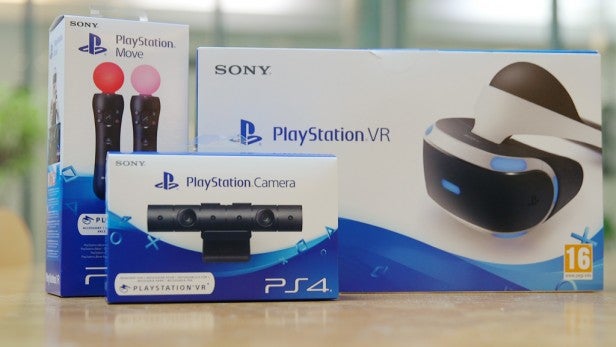
PlayStation VR – Verdict
PlayStation VR is one of the best virtual reality headset you can buy right now. It’s cheap while not compromising on performance and quality. The headset is simply stunning and incredibly comfortable to wear, and the games already available are some of the best VR experiences I’ve ever played.
Related: Best PS4 Deals
Compared to the Oculus Rift it offers a far more comfortable gaming experience at a much lower price point. Against the Vive it may not offer the level of detail and immersion, but is pretty darn close and doesn’t require the installation of additional sensors in your home and will not demand as much space for many games, either.
Don’t think of PSVR as the “cheap” alternative to what the PC has on offer right now. It’s definitely worth investing in a couple of Move Controllers to enjoy the true experience in all games, though.
The only minor irks are its dedicated power supply which needs to be unplugged to fully power down and the lack of enough USB ports on the console to charge all your controllers. Other than that, this is simply an astounding feat of engineering. I have no idea how Sony has pulled it off, but my word I’m glad they have.
I was so excited about virtual reality, but this was replaced with frustration the longer I tried to use the Oculus Rift. Now? I couldn’t be more enthused, and it’s all thanks to PSVR.

